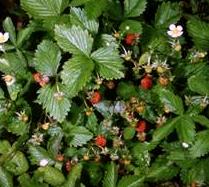Peat Moss

Peat Moss, also called sphagnum moss and bog moss, common name for about 300 species of moss plants that grow in swamps and bogs throughout the world. Peat moss may grow to 30 cm (12 in) or more in height. The plants have many branches covered with small, light green leaves. The leaves and stems have special cells that absorb and hold much water. Peat moss is one of the most common plants from which peat, a fuel, is produced. When the plants die, the dead organic matter is preserved more or less intact because the moss is acidic, so bacterial and fungal decay occurs slowly. The dead peat moss and other plants are compressed by the weight of the living plants growing above them. This compressed matter eventually forms the peat. The peat can be cut into blocks and removed for use as fuel. Peat moss is also useful in gardening. It combats excessive alkalinity in the soil and produces the acid environment that certain plants need to grow, including such ornamental shrubs as rhododendro



